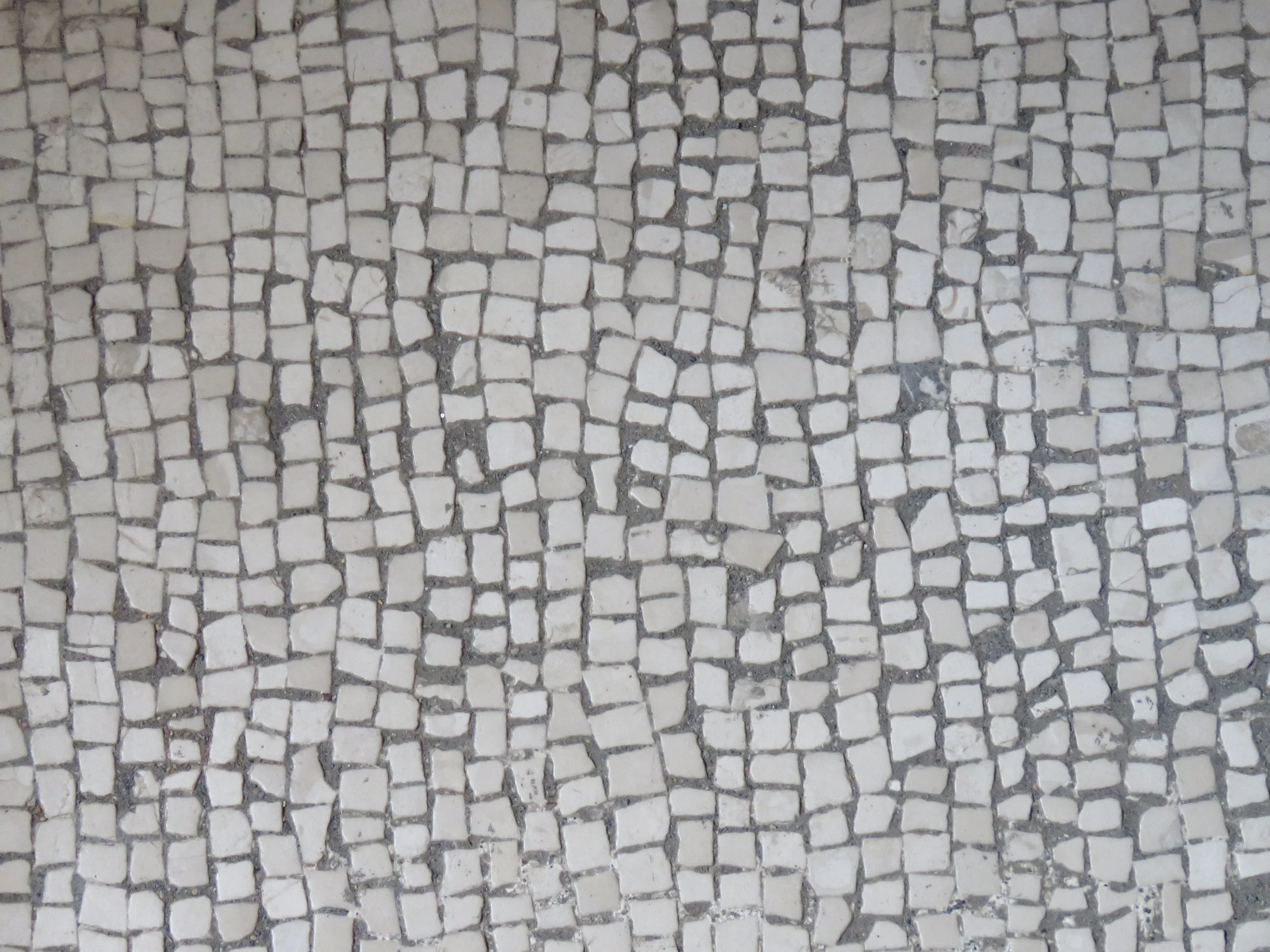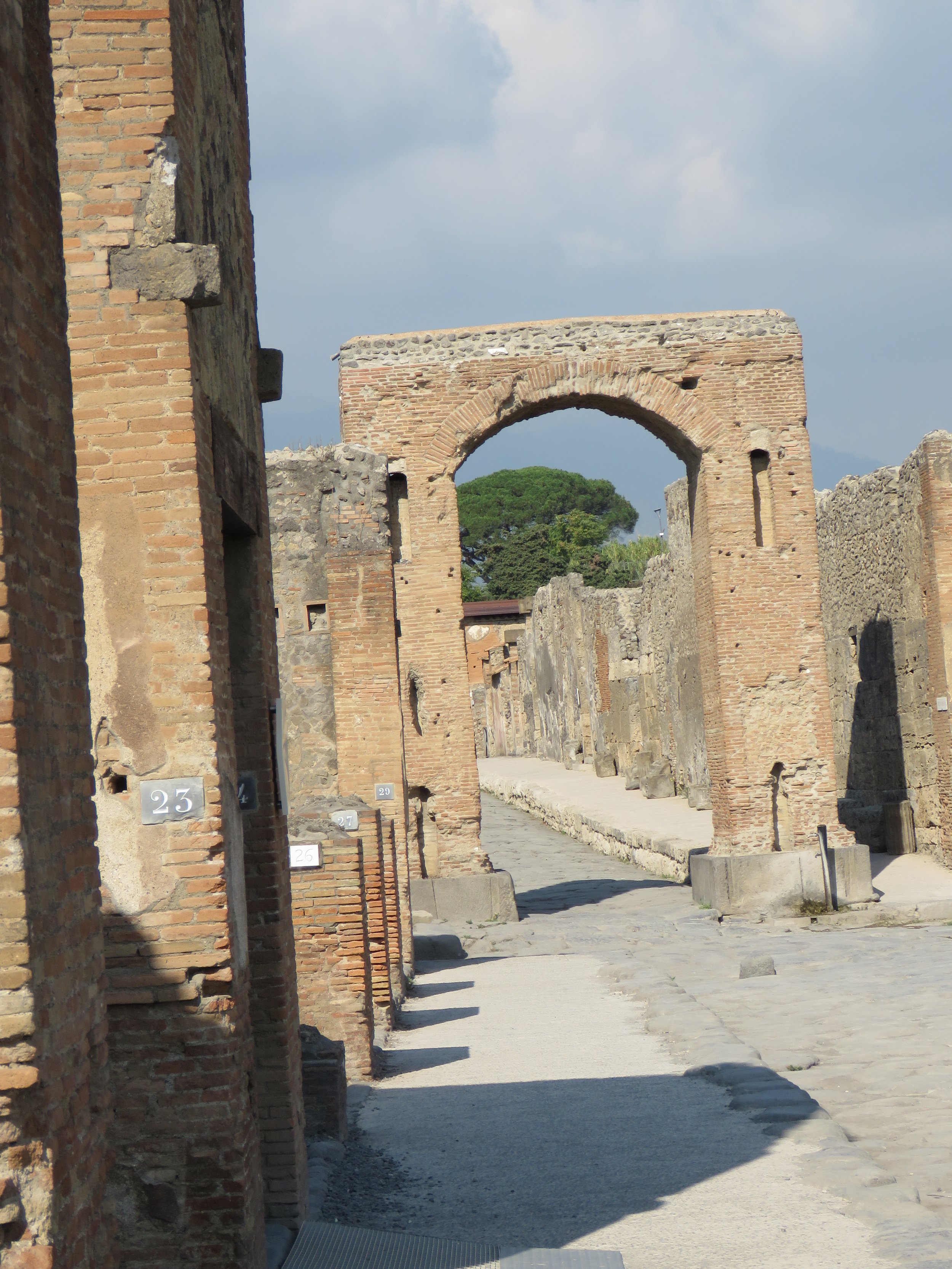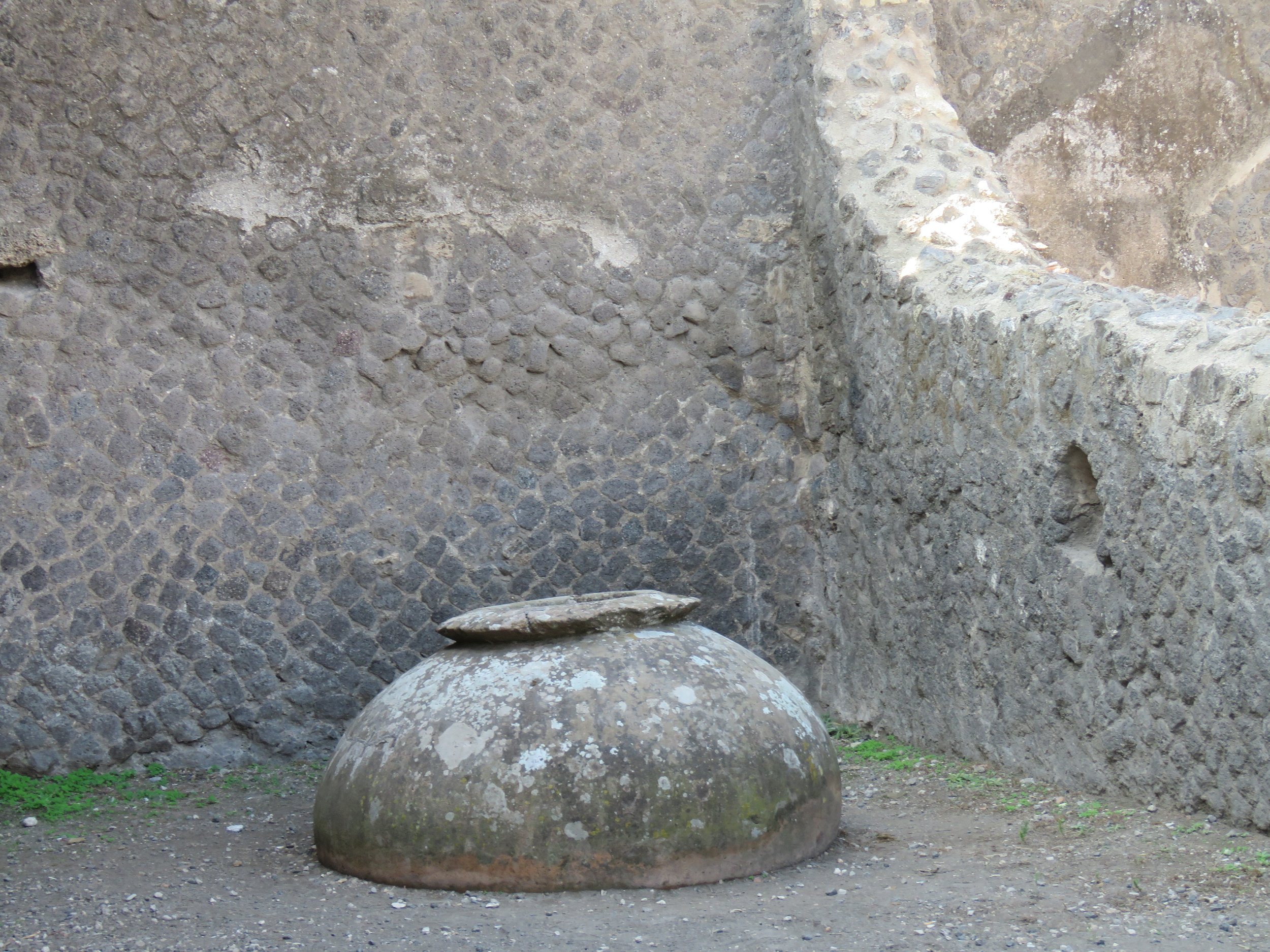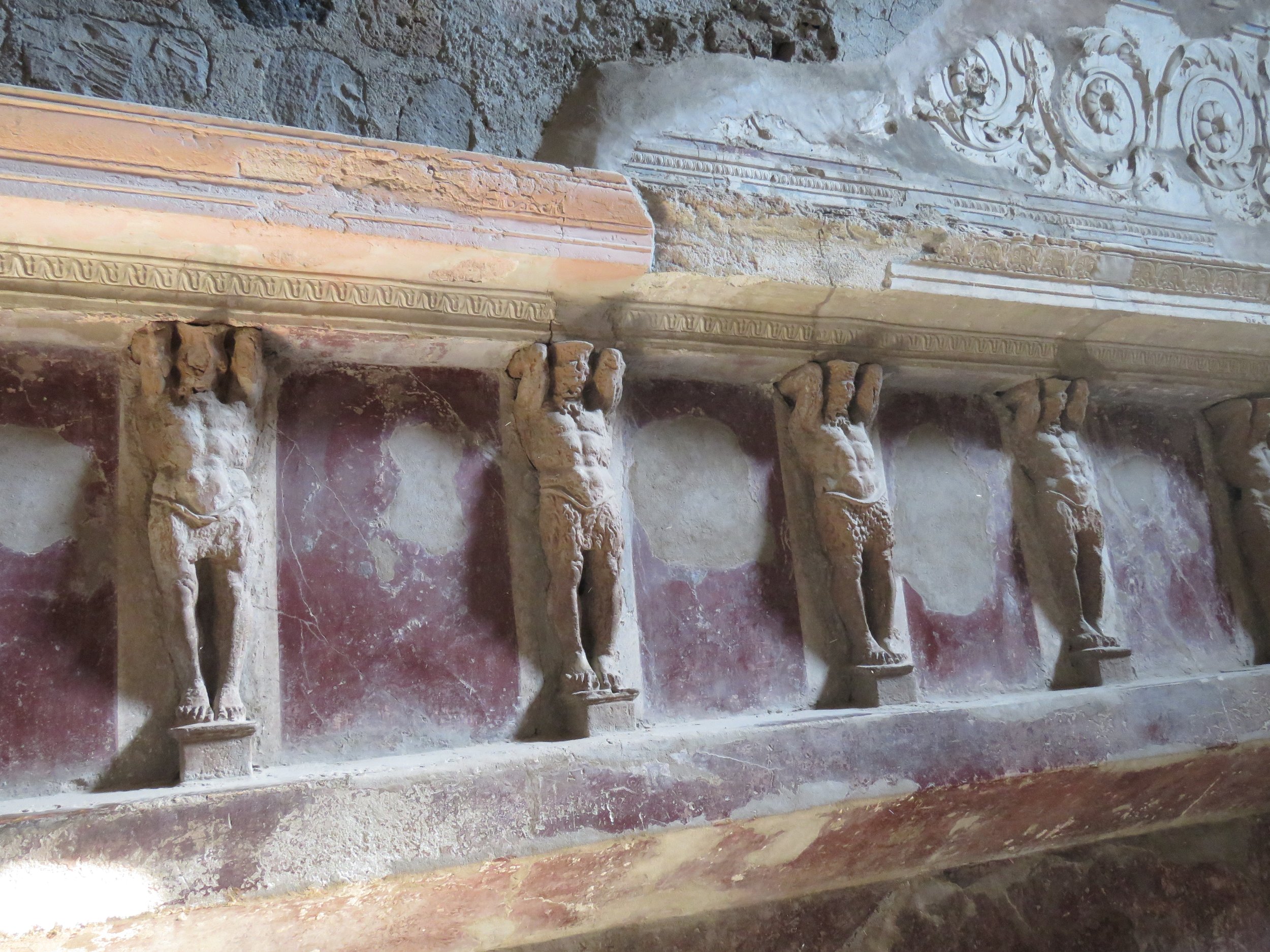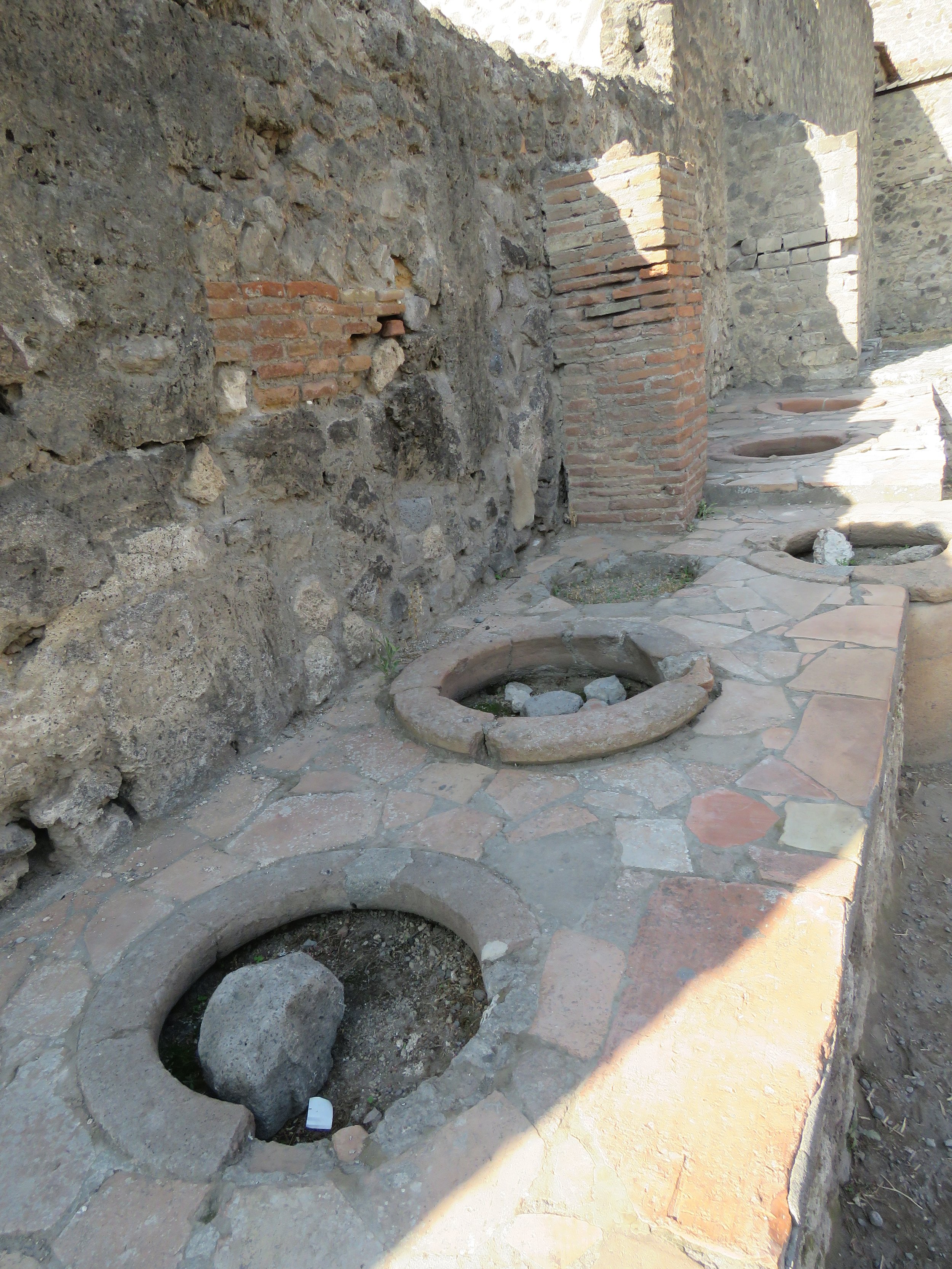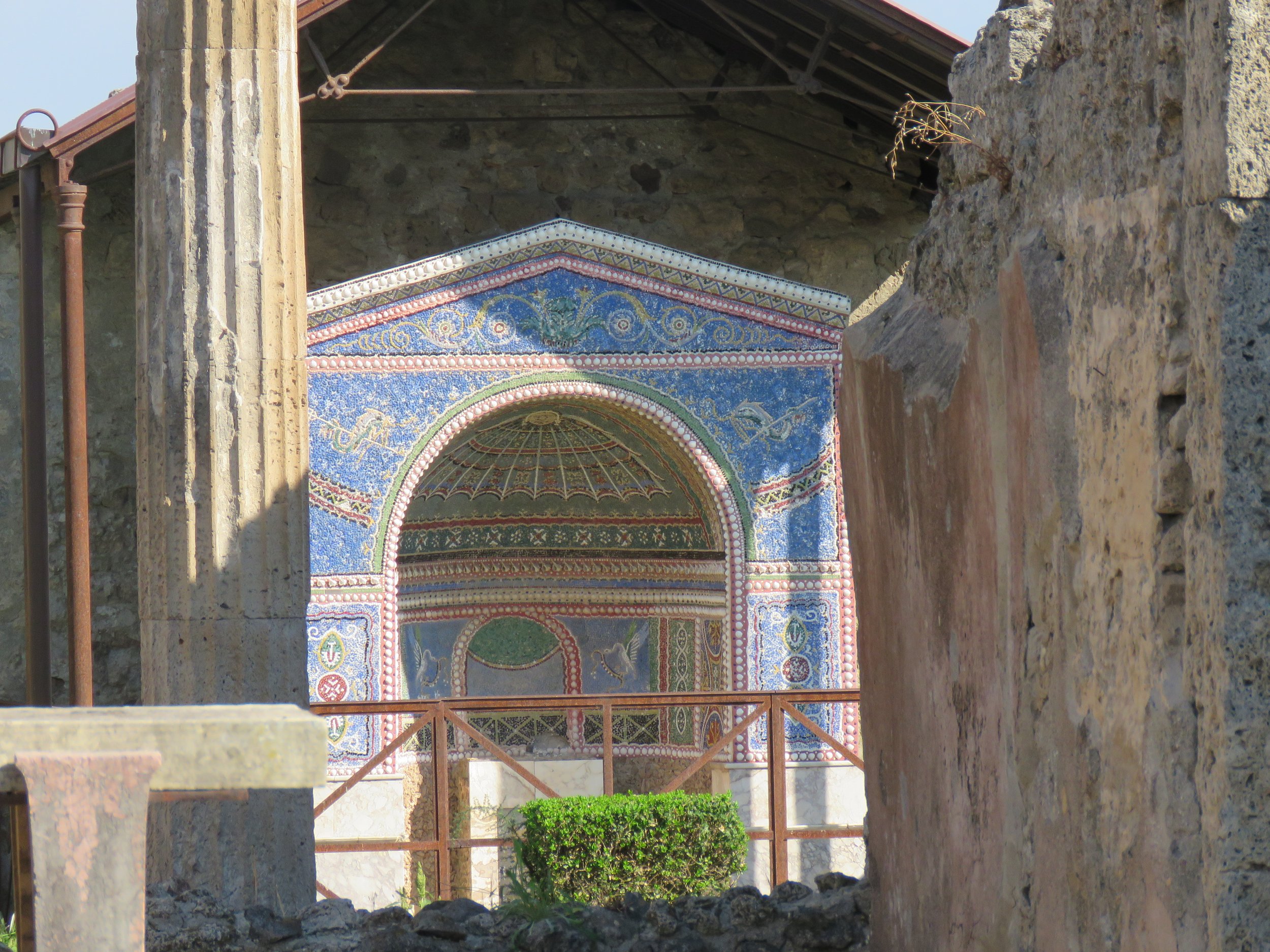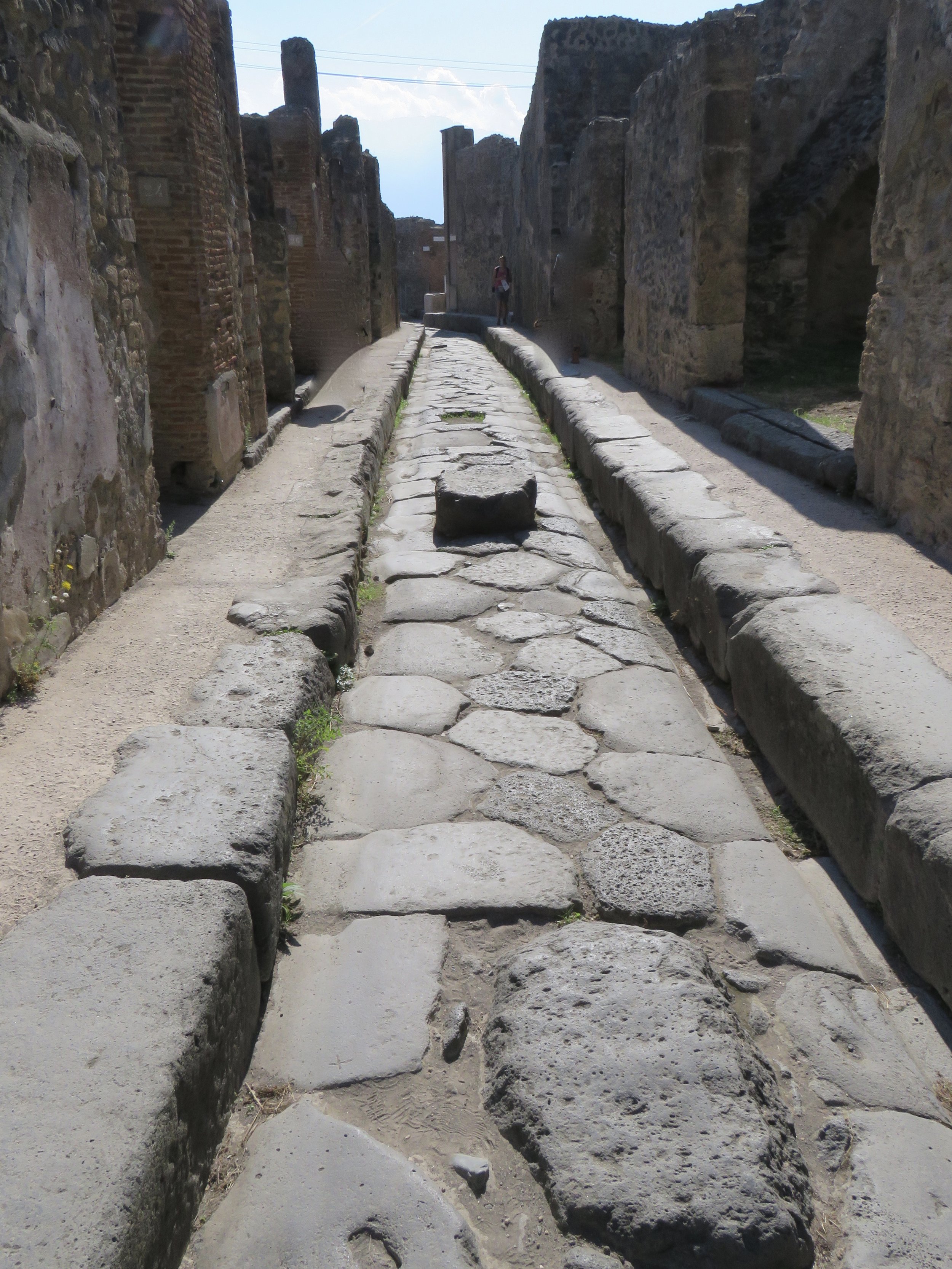As with so much in our lives, this trip, and our interest in it, started with a book. Pompeii by Robert Harris is a fantastic read that has you walking and living in ancient Pompeii, among rich families who have water front homes, who take hot baths, discuss politics and stroll along shops. In the shadow of Mount Vesuvius, it has you hearing the rumblings of the earth with no prior knowledge of such a thing as volcanic eruptions. I found the book riveting since it made me feel as if I was there. And now we are going there!
240 KM south of Rome is the city of Naples. As soon as we step off the train, we realize that this is a whole different world from northern Italy. Naples is chaos: an anthill of houses and streets and people. We’ve been warned about increased crime and plenty of pickpockets. Street vendors swarm everywhere. Garbage is overwhelming, as is dog poop and cigaret smoke….
We are happy to discover that the hotel we booked here, is a beautiful, modern apartment. On the outside, Palazzo Settembrini is a historic building in a narrow, busy street. Laundry decorates the opposite houses, there are little shops all around. But inside, the building has a modern lobby and an elevator. Our AirBnB apartment has gorgeous stone flooring, a spacious living room with kitchen, a bathroom and large bedroom with crisp white linens. It is also very, very quiet if we keep the windows closed. It’s lovely to have this much space for the price of an ordinary hotel room. The lovely couple that run the place, point out the bakery, the supermarket and nearby restaurants. One night we eat around the corner, on the street. The local food is great and we feel very authentic, sitting under the city wall’s gate while mopeds zoom nonstop by our table….
Naples might have gorgeous cathedrals and other historic landmarks but after Lucca, Siena, Florence, and Rome we’ve seen enough cities for a while. But Napoli is where pizza originated so we can’t wait to try authentic pizza here. Also, an Italian friend recommended porquetta – slow cooked, stuffed pork roast, thinly sliced. And it does taste beautiful. Italian coffee is served very strong in tiny cups. I have to laugh when we ask for a larger coffee and get the same tiny bit, just in a larger cup!
But for us, Naples is the jump off point to visit nearby Pompeii and Mount Vesuvius. To get there, we have to take a local train. The trains throughout Italy are not bad. They are very reasonably priced and pretty much on schedule. The little train from Naples to Pompeii, however, is an entirely different story. Be warned: reaching Pompeii or nearby Herculanum on your own is not for the faint of heart. We found the special platform at the very end of Napoli Centrale. It’s a small company that runs this train: Circumvesuviana. The signs on the platform did not work. There was no indication whatsoever which train would go to where, or from which platform. Through word of mouth we finally figured out where to wait. A train did not show up for an hour. Apparently they kept getting canceled. The people, however, kept arriving to take a train. When a train finally came, you could not have fitted another body onto the platform. We all squeezed into the, already full, train to the point of suffocating. It was a half hour, with about 20 stops, to get to Pompeii. There are no announcements at all about your next stop. And to make it worse: all signs at stations’ platforms are completely covered in graffiti so that it is impossible to read the name of where you are. Not a pleasant journey! The up-side is that it only costs 2 euros.
Once in Pompeii, it is not clear that all the signs ‘tickets’ do not direct visitors to the official ticket sellers for the site. We were glad we had read lots of information beforehand and walked straight down until we reached the official entrance where we bought 15 euro tickets to enter Pompeii.
One of the best things we had discovered, during our research, is the free audio tours by Rick Steves. We listened to the entire soundtrack prior to going and then played it again, on our phone, while we walked through Pompeii. His information was perfect. It told us where to walk, when to turn off the track, etc. It saved us about 15 euros each for a rented audio tour. Rick Steves’ tours are available throughout Europe, for most cities and sites. The app is free and so are the downloads. Highly recommended!
Sidewalks, chariot ruts and fluorescent stones still form the roads of Pompeii.
Pompeii is fascinating and eery. An entire city of 20,000 people with streets and squares and intersections. In your mind’s eye you can see the merchants, the women, the scholars, especially after reading the book I mentioned above.. People walked along these very sidewalks while chariots rushed down the roads, their wheels leaving ruts over the ages. There were busy shops and food places, a pub, a brothel. A large home from a well-to-do merchant, a poet’s house.
Bath house
In the shadow of Vesuvius.
Now we walk these same streets, some 2,000 year later. The public bathhouse had ornately painted ceilings and heated floors. The city had a good water supply system with reservoirs and leaded pipes. They were so advanced! The ceilings had ruts to prevent dripping.
This was a food shop with bowls fitting into the rims.
The people had no idea at all that the mountain near their city was a volcano. They had no way of knowing because Vesuvius had not erupted for 1,200 years. Suddenly, in August of the year 79 it did blow. It completely took everyone by surprise.
The nearby resort town of Herculanum (Ercolano) was covered in lava. Pompeii was smothered in ash and gasses. 2,000 people died. Both towns were effectively sealed and preserved, to be discovered by archaeologists more than a thousand years later… When they found human remains, they poured plaster in the cavities and made perfect moulds of the human bodies in the positions in which they died…. Eery but also fascinating. It felt like a privilege to walk these dusty lava streets, to see the ruts of chariots and the remains of people caught by surprise. It was even worth the crazy train ride to get here.
